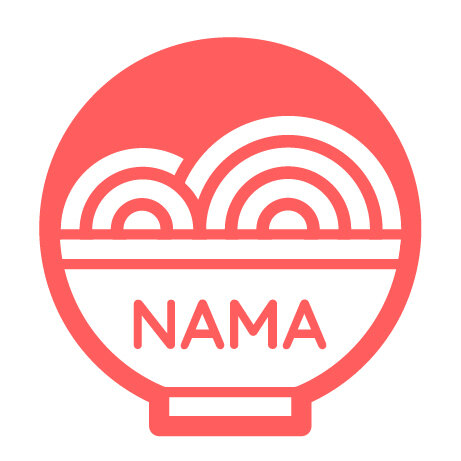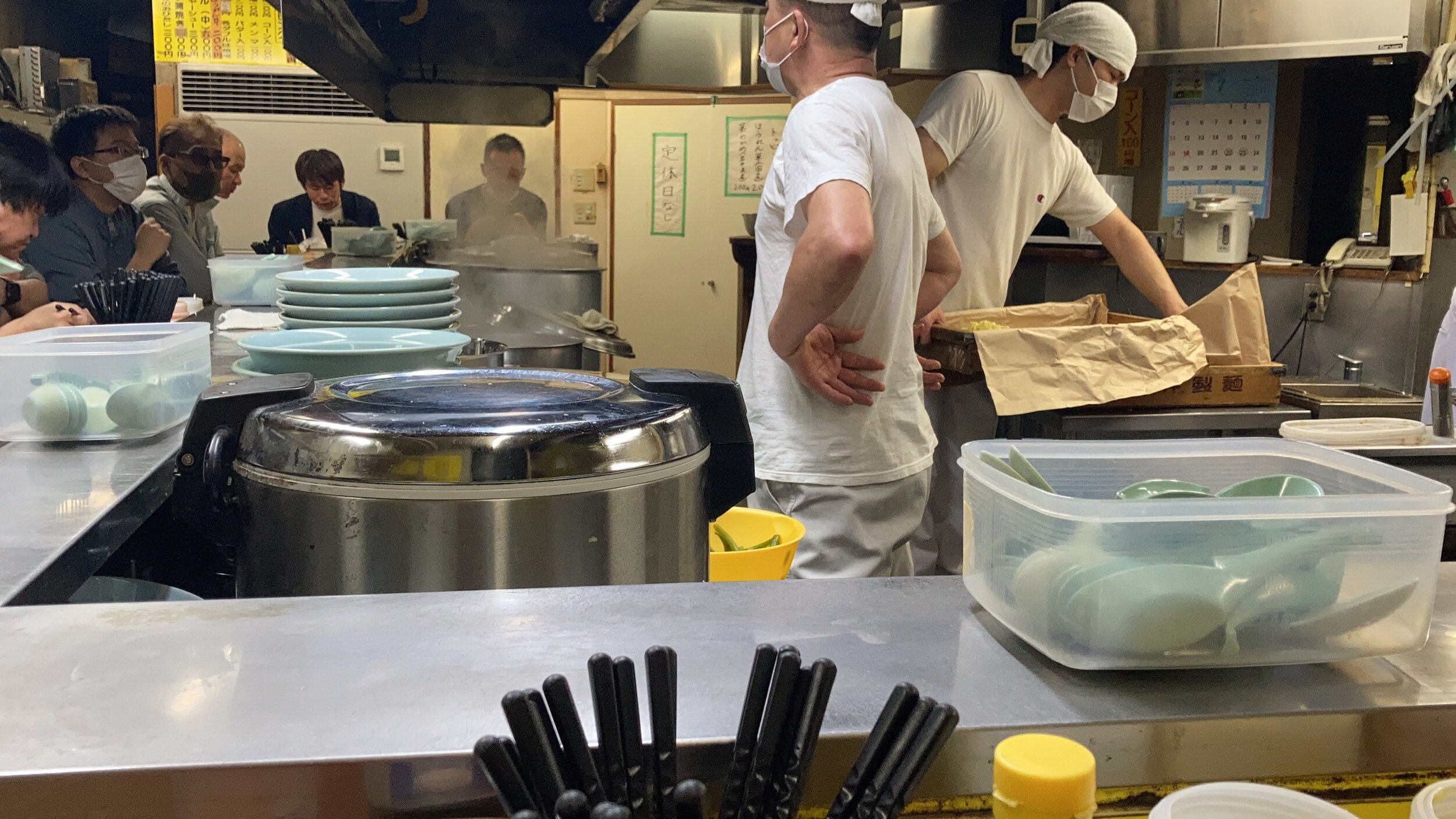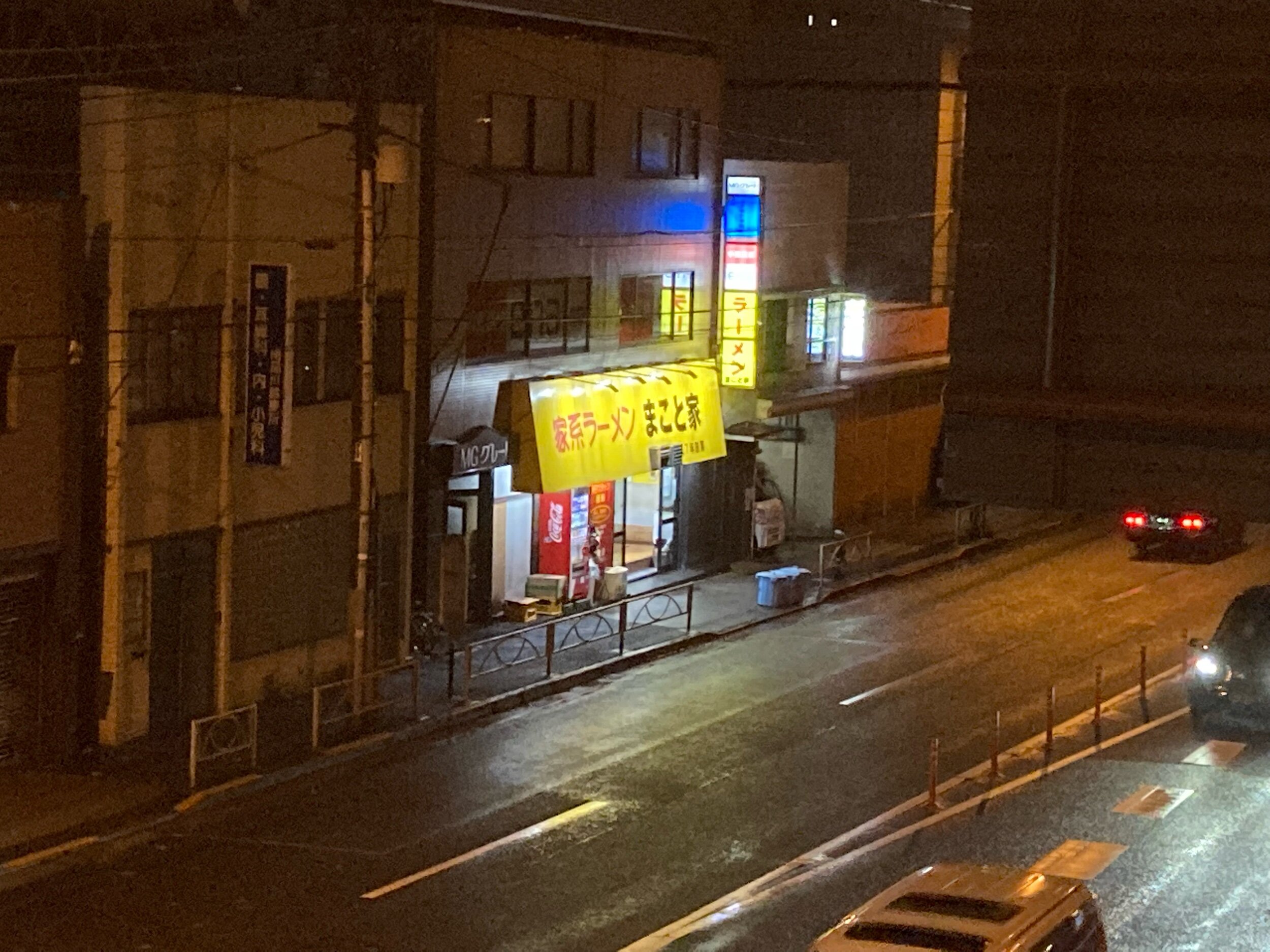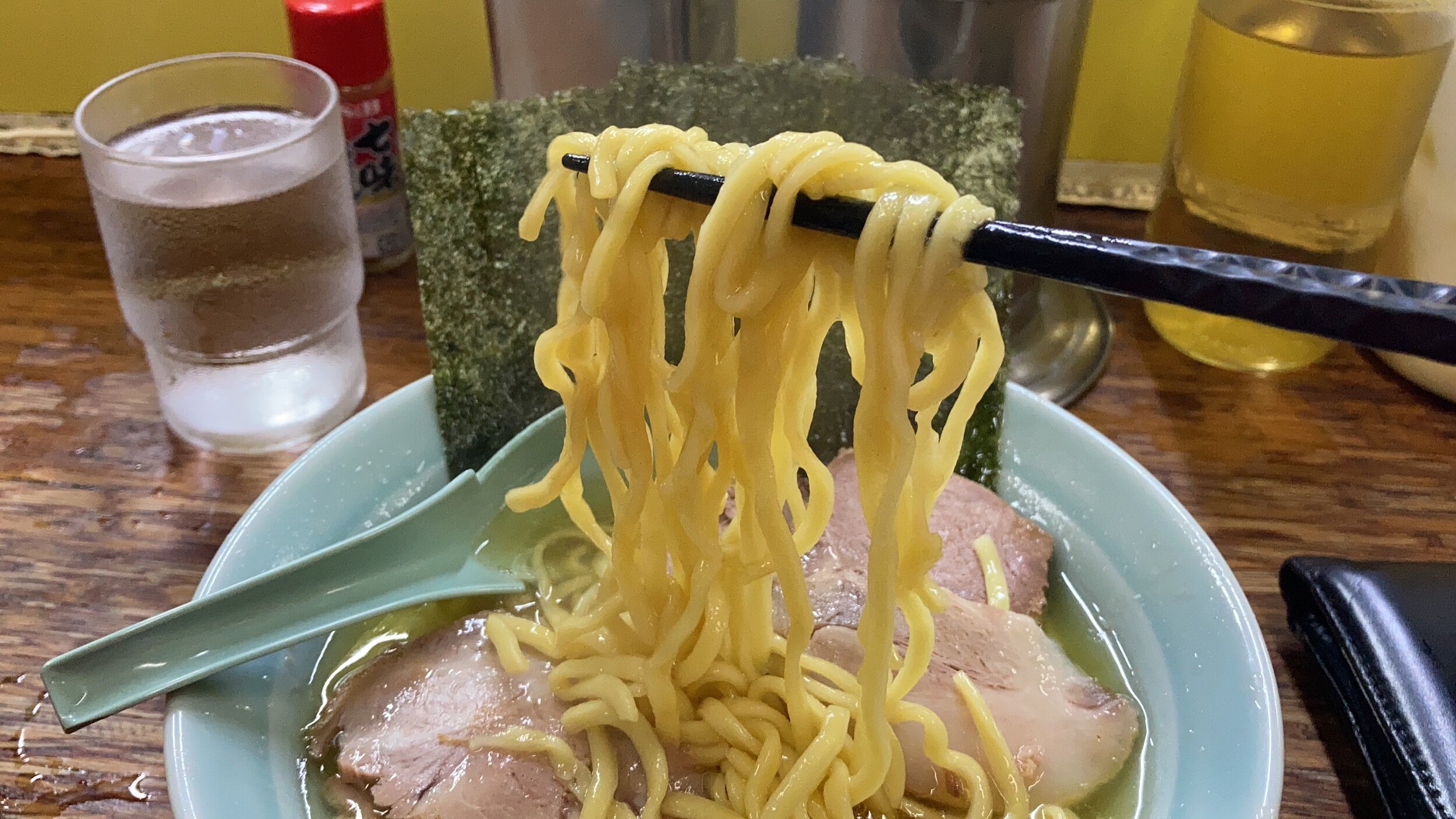Makotoya / まこと家 - Shinagawa
Makotoya is a legendary iekei style tonkotsu-shoyu ramen store in the south of Tokyo‘s Shinagawa area. They are famously serving ramen from 9:30 in the morning to 6 in the morning, closing only got 3 and a half hours per day.
Chashumen with extra oil and tare at Makotoya
Iekei is a famous style of tonkotsu ramen which originated from the still existing ramen shop Yoshimuraya in Yokohama. It’s best imagined as a mix of Tokyo shoyu ramen and creamy tonkotsu ramen. At Makotoya it seems accentuated with chicken fat ladled on top of the bowl. Furthermore the rather short, but thick noodles are another uncanny feature.
Thick and short noodles are typical for iekei
Another feature is the possibility to modify your ramen with your order, which is quite often used by iekei customers. A lot of ramen shop staff might even directly ask you for your modifications before they start making your bowl, as modifications are basically expected rather than being the exception like at other ramen stores. Besides the normal topping variations, you can modify the boiling time of the noodles, the amount of aroma oil and the amount of tare seasoning. My recommendation for first time visits is to just add a shorter boiling time with the word “katame” and stay away from oil and tare modifications until after you had the first bowl at a shop. Although I myself don’t follow this recommendation all the time, like here at Makotoya. I went for “katame, oome, koime” which means harder noodles, more oil and more seasoning. I think I could have gone without the extra oil honestly.
One last thing: The proper way to finish a bowl of iekei ramen is to get a bowl of rice and use the soup like a sauce. How you do that is up yo you. Ladle I’m on top of the rice or spoon out bites of rice and fill the spoon with soup. Or just dump the rice into the ramen bowl. You do you.
Re-visited Makotoya
I made my way a second time there to try a bowl without modifications and it was definitely a bit of a different experience. The noodles were notably softer and the soup was less punchingly salty. And of course, there wasn’t a centimeter layer of fat on top, rather beautifully dispersed droplets of chicken oil spread all over. I also added negi, which is coated with some rayu (spicy sesame oil) which adds freshness and crunch, but also a distinct sesame aroma from the rayu.
For me, this second bowl told me that I don’t necessarily need the additional oil. However I did miss the extra punch from the extra tare and the more al dente noodles. I don’t think I would recommend the negi for first time customers, as they definitely heavily alter the experience, but I personally really enjoyed them and probably would add them again during my next visit.













